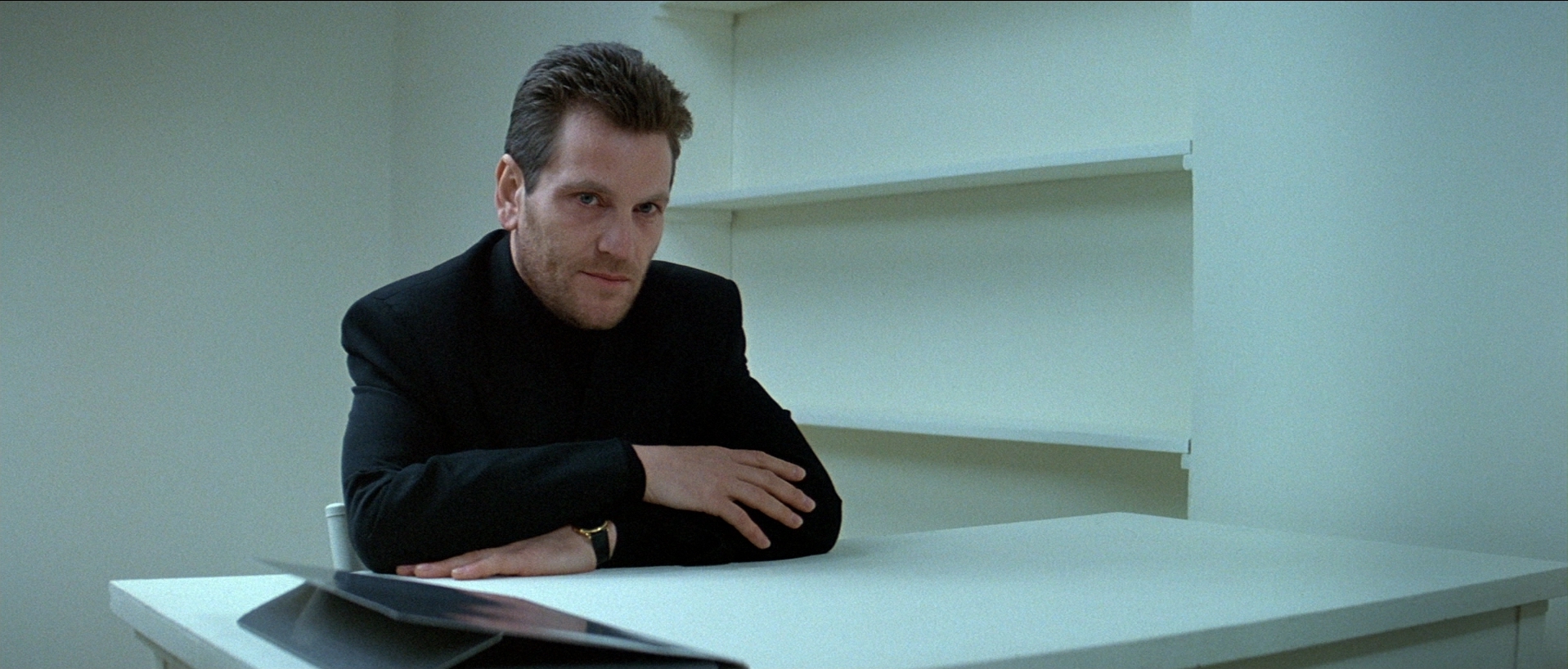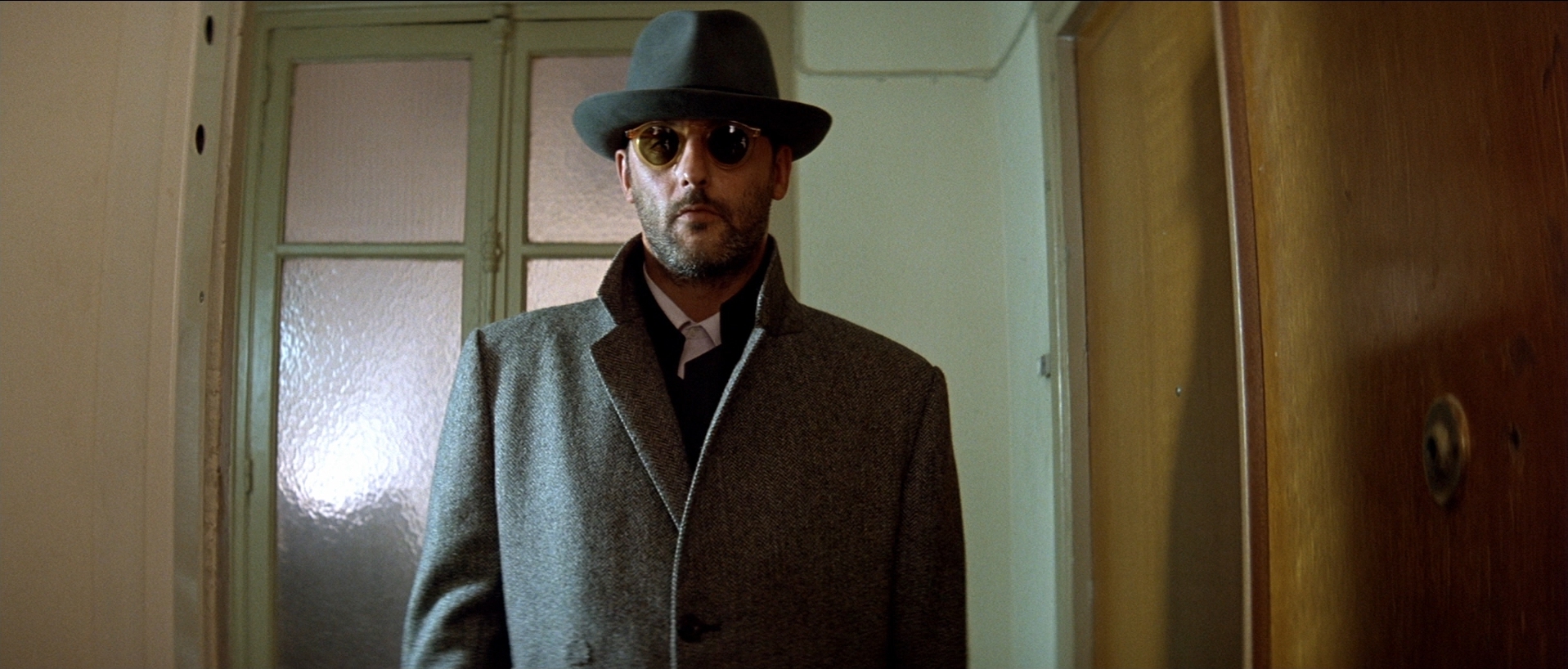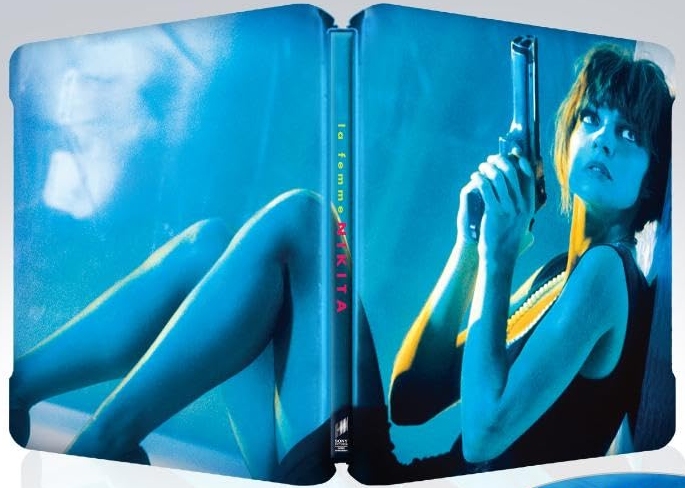The French Cinéma du look movement of the 1980s and ’90s crashes headfirst into the Hollywood action blockbuster in director Luc Besson’s très cool assassin thriller La Femme Nikita. Criticized at the time for prioritizing style over substance, Besson’s film was nonetheless very popular, has proven quite influential, and remains a thrilling piece of pop entertainment with more depth than may be apparent at first glance.
Amusingly, the movie’s original on-screen title was always just Nikita. The “La Femme” part was added by the American distributor to make it sound more French, and perhaps to avoid confusion with the River Phoenix flop Little Nikita from a couple years earlier. To audiences back home in France, La Femme Nikita translates as “The Woman Nikita” (or “Nikita the Woman”) and must sound very strange indeed.
| Title: | La Femme Nikita (a.k.a. Nikita) |
| Year of Release: | 1990 |
| Director: | Luc Besson |
| Watched On: | 4K Ultra HD Blu-ray |
| Available On: | DVD Blu-ray (out of print) Various VOD purchase and rental platforms |
Along with his contemporaries Jean-Jacques Beineix (Diva) and Leos Carax (Boy Meets Girl), Luc Besson first burst onto the French film scene in the early 1980s as one of the prominent faces of an emerging cinema movement noted for flashy visual stylization and fusion of high culture with pop culture. Besson in particular was obsessed with bringing a French sensibility to American populist genres, such as the post-apocalyptic Le dernier combat (1983) and the crime thriller Subway (1985).
Although his films were popular with audiences and had select critical support (especially outside of France), they faced resistance from mainstream French critics, who often called them shallow and pointless. While Besson himself might argue that what he was doing was no different than his predecessors from prior decades riffing on American film noir (René Clément’s Purple Noon) or musicals (Jacques Demy’s The Umbrellas of Cherbourg), detractors would dismissively compare his work to TV commercials or music videos instead. (In English-speaking filmmaking regions, this Cinéma du look group might be analogous to Ridley and Tony Scott or Michael Mann around the same time.)
Besson’s 1990 Nikita/La Femme Nikita was the breakthrough hit that made waves in the American market. The film is an action thriller about a violent, out-of-control drug addict (Anne Parillaud) who, after being imprisoned for the murder of a police officer, is forcibly recruited into a secret government program that stages her death, cleans her up, and trains her to become an elite assassin. Resistant to the entire operation at first, she proves a quick learner at the guns and fighting, but is a lot slower to pick up the social graces and niceties taught by a veteran spy named Amande (screen legend Jeanne Moreau).
After three years in captivity, Nikita is released back into the world by her handler, Bob (Tchéky Karyo), on what turns out to be a very cruel introductory mission designed to test how well she faces failure. After surviving that, she’s left be for a time to build a life under a new identity. She finds a boyfriend – who thinks she’s a nurse – and begins to settle down into something resembling normalcy, only to have her first feelings of happiness interrupted at inopportune moments when called upon to perform her real job.
The story doesn’t get especially more complicated than that, and the movie actually has some pretty long stretches between its handful of big action set-pieces. However, the characters are well-drawn, and the script develops an interesting theme that, having started in a near-feral and totally sociopathic state, Nikita only starts to become a real human being with emotional complexity and moral values after she’s trained as a professional killer.
Anne Parillaud is marvelous in the lead role and won the French César Award for her performance, and Jean Reno (who’d worked with Besson in Subway and The Big Blue) steals scenes in the second half of the film as a cleaner who makes Nikita’s life even more complicated than it already was.
Besson directs the picture with maximum stylistic flair and panache. La Femme Nikita is a vibrant, energetic movie that’s still a lot of fun to watch three decades later. Its success would spawn both two feature remakes (Black Cat in Hong Kong and Point of No Return in the United States) and two television series that each ran for multiple seasons. Besson would of course later go on to direct major movies including The Fifth Element (1997) and Lucy (2014), and to become a very prolific producer (of the Transporter and Taken franchises, among many others).
Unfortunately, the film’s legacy is also somewhat clouded by the filmmaker’s personal troubles. Married to Parillaud at the time, the couple divorced a year later under what look like unsavory circumstances, and Besson has been dogged by scandal in recent years. Whether any of that should detract enjoyment from this or any of his films is a question each viewer will have to answer for him- or herself.
The 4K Ultra HD Blu-ray
Sony Pictures released La Femme Nikita on Blu-ray in 2008. That disc later found its way into a double-feature bundle with the unrelated Run Lola Run in 2010. Both editions are currently out of print. For the new 4K upgrade, Sony has made the strange and frustrating decision to only issue the movie on a 4K Ultra HD disc, with no corresponding standard Blu-ray or even a Digital Copy code. As some sort of recompense for collectors, the studio has packaged the disc in a fairly nice SteelBook case.
I reviewed the old Blu-ray back in 2008 and gave that disc high marks at the time. As much as standards have risen in the meantime, I took a look at it again now to compare against the new 4K and found that it holds up reasonably well. A touch of artificial sharpening is my only serious disappointment. If not for that, it’s still very watchable overall.
Nevertheless, the new 4K Ultra HD transfer is an improvement. Once you get past the blurry opening credits, which have always been a problem with this movie, the approximately 2.35:1 image is very sharp and detailed with no sign of any unwanted sharpening artifacts. Grain texture is well rendered, and colors are very vivid.
The one flaw I’ll call out was somewhat of an issue on the old Blu-ray as well, but is emphasized even more in the HDR grade. Shadow detail appears crushed in dark parts of the image. This is most noticeable in the Bob character’s black suit, which – even in daytime scenes – frequently looks like an undistinguished dark blob underneath the actor’s head.
The 4K Ultra HD offers the movie’s French-language soundtrack in either DTS-HD Master Audio 5.1 or 2.0 options, as well as an English dub in DTS-HD Master Audio 5.1. I’m not a fan of dubbing and wouldn’t normally give that selection a second thought, but it turns out there may actually be a reason to at least sample it.
When starting playback, I defaulted to the French 5.1 track and was very pleased with the bassy opening music. The score by Eric Serra sounds great throughout the movie. The music has plenty of breadth, depth, and dynamic range. Dialogue is also very clear in the mix. However, by the first action scene, I felt something was wrong. The gunfire sounds awful. All the gunshots are muddy, hollow, and dull. I switched over to the French 2.0 option, but it sounds virtually identical. This is consistently a problem in all of the film’s action scenes, start to finish.
For a moment, I began to wonder if perhaps, being a French movie from 1990, the film might have simply never had very good sound effects. La Femme Nikita was Besson’s attempt to emulate a big-time Hollywood action blockbuster. The French film industry was not particularly known for anything like that at the time, and the sound design team might not have had the infrastructure or experience to imitate heavy automatic weapons fire as well as Hollywood was known to do.
That thought was disproved as soon as I put in the older Blu-ray and listened to its French Dolby TrueHD 5.1 track, which has much crisper and better defined gunfire in the same scenes. I was careful to level match playback of the two discs, and am certain this isn’t just a volume discrepancy. Something is off about the sound effects channel in both French soundtracks on the 4K disc. In fact, if you switch over to the English dub on the same disc, you can hear the better gunfire there.
Audio on the new 4K disc isn’t unlistenable, but the action scenes stood out to me as disappointing right away. I like the 5.1 track on the earlier Blu-ray better.
The player-generated subtitles are still authored in the same large and unattractive font used on the prior Blu-ray, but have been moved upwards so that both rows of text are positioned within the movie image, safe for viewing in Constant Image Height projection. (The Blu-ray annoyingly had one line in the image and one below in the letterbox bar.)
The 4K Ultra HD has no extras at all, not even so much as a trailer. What it does have that I found somewhat troubling is a Data Sharing feature that, if your disc player is connected to the internet, will report back to the studio statistical data about how often you watch the movie unless you disable it. No thank you on that!
Related
Note: All screenshots on this page were taken from the 2008 Blu-ray edition of the film and are used for illustration purposes only.




